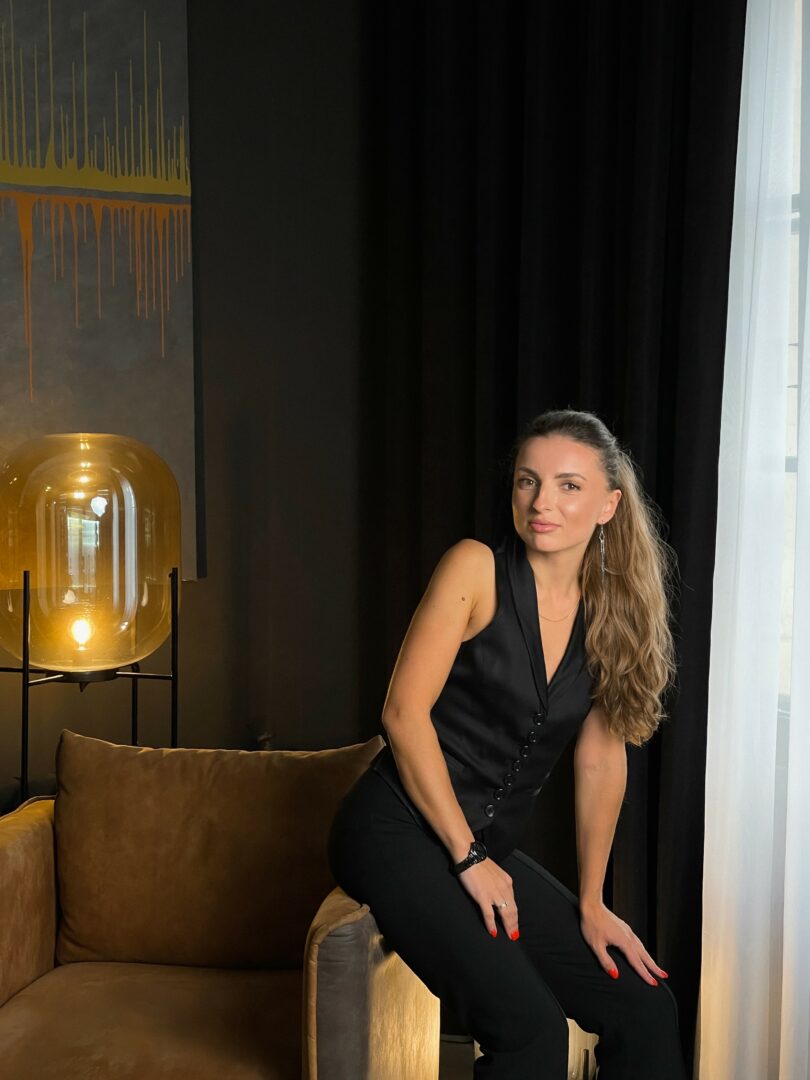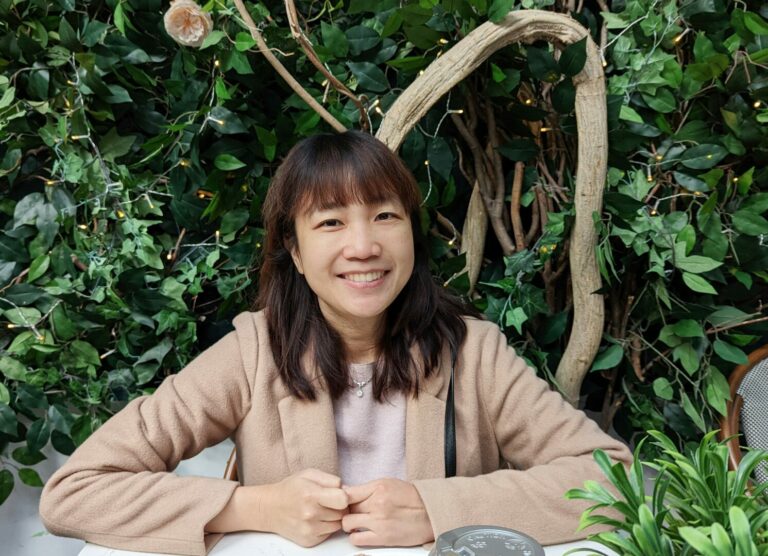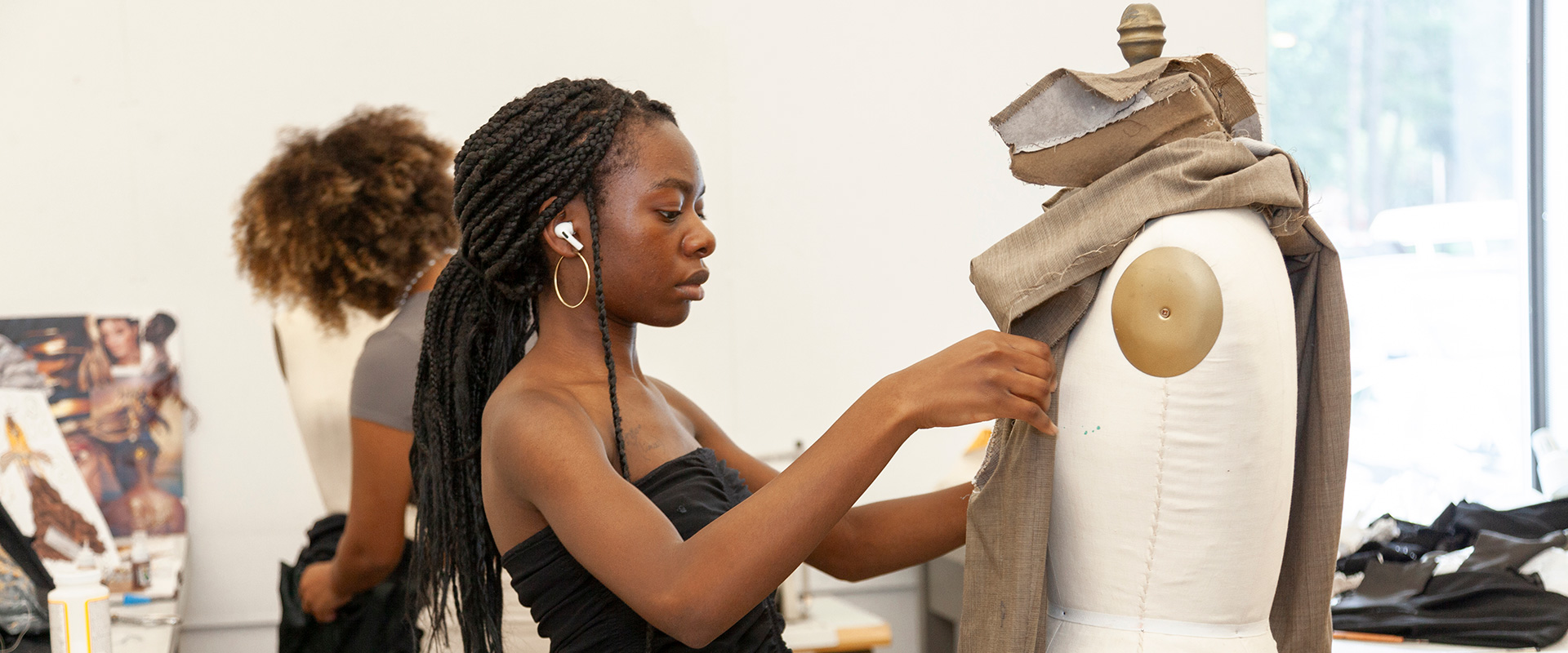We were lucky to catch up with Genie German recently and have shared our conversation below.
Genie, thank you so much for joining us. You are such a positive person and it’s something we really admire and so we wanted to start by asking you where you think your optimism comes from?
Remember the three wise monkeys?
The first monkey covers its eyes—”See no evil.”
The second monkey covers its ears—”Hear no evil.”
The third monkey covers its mouth—”Speak no evil.”
The key to my happiness and optimism is walking through life with a positive mindset. Let me share with you the most important truth I carry with me every day: ”Your mind cannot hold both a negative and a positive thought at the same time.” That’s it. Simple as that. Every time you allow a thought into your mind, you make a conscious choice—I repeat, a conscious choice—whether to be happy or miserable, to move through life with optimism or with your head hanging low.
“Thoughts shape actions, actions become habits, habits form character, and character defines destiny.”
Think about it—your thoughts shape your destiny. So don’t say that nothing depends on you.
I can already hear the question turning into frustration:
”What about economic crises, pandemics, floods (and the list goes on)?”
I won’t be revealing any great secret when I ask in return:
”Then how do some people survive the impossible, rebuild their lives from nothing? Who are these people?”. Think about it.
Everyone who knows me would say I’m a very positive person who spreads that positivity to others. But trust me, I wasn’t always like this. What may seem like mere philosophy actually works in real life. And I’ll tell you about the methods I use—methods that have truly worked for me.
1. Start your day with gratitude and goal-setting.
Not with social media, news, or emails—but with a notebook and a pen. I have the simplest gratitude journal, bought from Amazon. Every morning, it asks me:
”What are three things I’m grateful for?” and “What will make my day great?”
You’d be surprised how many positive thoughts come rushing in, lifting your mood the moment you start writing.
2. Surround yourself with inspiring books.
Self-development books, biographies of successful people—read them, listen to them, underline and take notes. Let them be your daily companions—while walking, commuting, cooking, cleaning, during breakfast, or before bed.
3. Remove toxic people from your life.
This is the hardest step, so brace yourself. Some of these people might be close to you. My stance is clear—help if you can: share, support, give. But only to those who accept your help, who listen, who believe it will work. Run from those who argue, complain, whine, get angry, badmouth others, and see only the worst in the world. If your efforts to help keep hitting an impenetrable wall, don’t waste your energy trying to break it down. Step back. Maybe their time for change just hasn’t come yet.
4. Eliminate negativity from your life.
Scary news, negative media, and (don’t throw anything at me) sad, depressing music—you don’t need any of it. Filter the information you consume. Take only the facts you need, avoiding endless doom-scrolling and unnecessary anxiety. Don’t let yourself be manipulated. Don’t be a pawn in someone else’s game. Live your own life, focus on your own day.
Leave the suffering to melancholic songs to teenagers—that phase should be over. You went through it in high school. Now it’s time to take control. Stop feeling sorry for yourself and start doing something.
5. Accept what happens as it is.
No point in lamenting ruined plans, blaming abstract (or specific) culprits, and fighting against the current—it only slows you down. Here’s what to do: accept the situation, process your emotions, think rationally about what you can learn from it, say “Thank you for the lesson,” and move forward.
Forget phrases like “If only…” or “I wish I had…”
That’s the past. Why get stuck in something you can’t change? Regret and anger are the two most destructive emotions—get rid of them.
6. Set clear goals.
Who we are and where we are right now is a result of how well we manage our minds and set goals.
Goals should cover every aspect of life: health and well-being, relationships, career, personal growth, and finances. Prioritize as you see fit.
The first and most crucial step is to define them clearly. You’d be surprised how many people don’t truly know what they want. And once you do—work on them every day. No excuses like “I wanted to, but…”
Write them down, think about them, break them into smaller steps. Train yourself to write them with your non-dominant hand (this builds new neural connections). Gather all the useful information you can. Get out of the house, meet people, find common ground, share your story on social media. In short—search, move forward, keep going.
But never forget to be a big dreamer—without that, nothing will work.
Over the years, I’ve explored countless self-development techniques, read dozens of books, attended seminars, joined groups, studied astrology and human design—so much. But what really works is how much you’re willing to change your mindset and perception of the world.
You change, and the world around you changes.
Being an optimist and seeing the good in life is work. At first, it feels hard—your mind and body resist new habits, trying to drag you back to your old (even if flawed) ways. But don’t give up—I promise, the results are worth it. Over time, you’ll attract different people, positive events, and “luck”—everything shifts, even the country and language you live in, if that’s what you once wished for.
Seeing the good and staying positive doesn’t mean living in rose-colored glasses—it means looking at the world through clear glass, not one distorted by the dirt people fill their lives with.
I’m not saying you should ignore the bad things happening in life. Help where you can, if it’s within your power. But don’t lose yourself where you’re powerless. Preserve yourself for actions that truly matter. After all, we’re all here to help each other in some way—each in their own way.

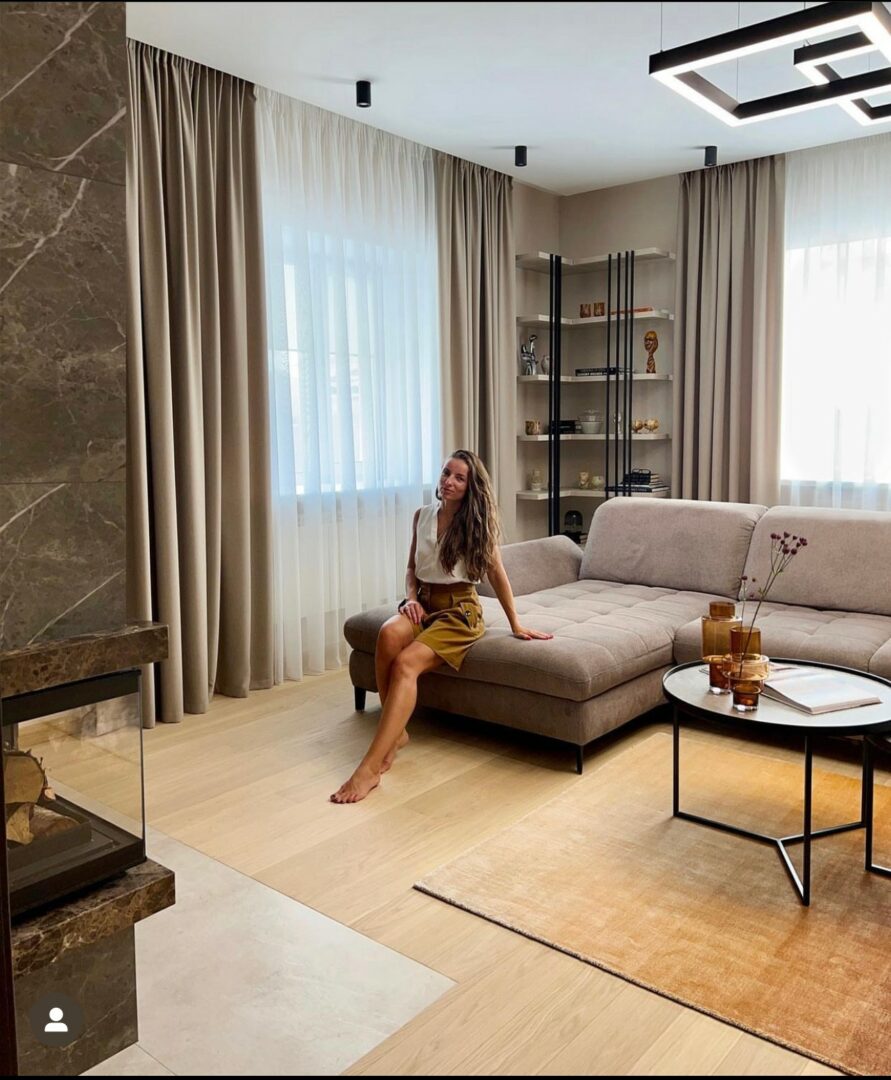
Thanks for sharing that. So, before we get any further into our conversation, can you tell our readers a bit about yourself and what you’re working on?
I have been working in interior design since 2013.
I have successfully completed over 20 residential home projects and more than 30 apartment projects. Everything starts with just the framework and load-bearing walls and ends with the final decorative touches, like a vase on the fireplace mantel.
I do not take on partial projects or incomplete work—each project must be whole and cohesive, not assembled piece by piece by different people.
The design project development process consists of several stages. We move step by step, carefully considering every detail and signing approval documents for each stage. This process has been refined over the years: I do not rearrange the stages, nor do I start construction before the project is fully completed. Every lesson was learned the hard way, and I am grateful for all of them—because now, I know exactly how things should be done.
I am always involved in every aspect of the process. Even though I delegate the technical part to an architect and visualization to 3D specialists, I am always present on-site—I absolutely love construction sites.
With over 10 years of experience in this field and a continuous commitment to education, I am convinced that design must primarily serve the most essential human need—to live in a healthy and well-planned environment. Poorly designed lighting, a misunderstanding of how colors affect psychology, or a lack of knowledge in ergonomics and composition can not only cause discomfort but also harm one’s well-being. That is why it is crucial to be extremely careful when choosing a designer for your home.
A designer must also be a good psychologist. Design is not just about creating a functional and aesthetically pleasing space; it is also about understanding the client’s desires, guiding them in the right direction when necessary, and explaining decisions in a clear and convincing way. Clients unfamiliar with the fundamentals of design may want something they saw in a magazine, without realizing that those elements may not suit their own space. But every space follows its own set of rules, and it is important to respect them.
I have always said that everything is built according to certain principles—nothing comes into existence by chance. A designer cannot afford to be unaware of or ignore the fundamental rules that shape a well-designed space. However, the client’s personal feelings and preferences are also incredibly important, even when they contradict those rules. A true professional is someone who can find the right balance. Sometimes, family members have completely different visions for their home, which can create major challenges—or as I prefer to call them, “the most exciting puzzles to solve.”
I put in maximum effort to understand my client’s needs and determine what kind of space will truly feel like “home” to them in every sense. A design project is not just about drawings and renderings—it is about diving into the client’s lifestyle, their rhythm, and their habits. How will they move through the space? Which areas are most important? How should the lighting be planned for every scenario? These are all crucial questions that must be addressed during the design phase.
My projects are highly detailed. I want any specialist involved to be able to pick up the project documentation and immediately understand what needs to be done. The technical portion of an average-sized home alone can consist of around 90 pages, with an additional 50 pages dedicated to 3D visualizations. Our team creates highly detailed 3D renders because I do not want any surprises for my clients—everything must be approved and agreed upon during the design phase. Any later revisions can lead to significant changes and complications.
It is no secret that working with people is one of the most challenging aspects of any profession. Not every collaboration works out, and that is completely normal. The key is to identify what is most important for both you and the client in your partnership.
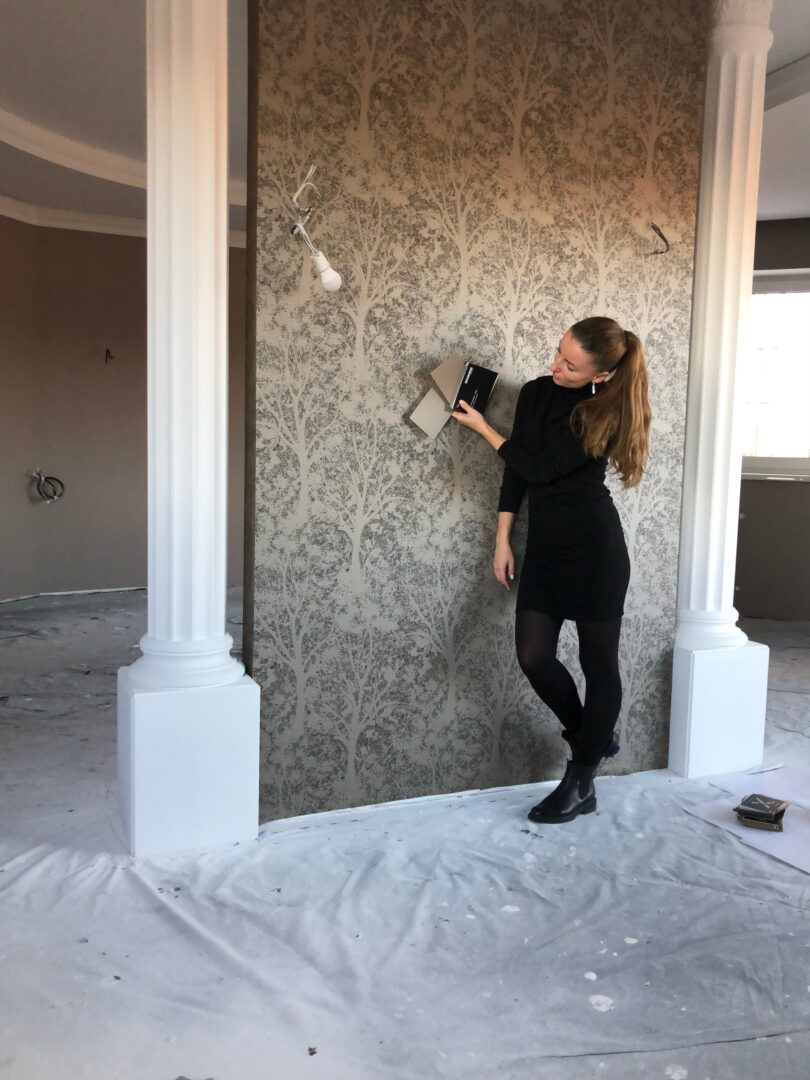
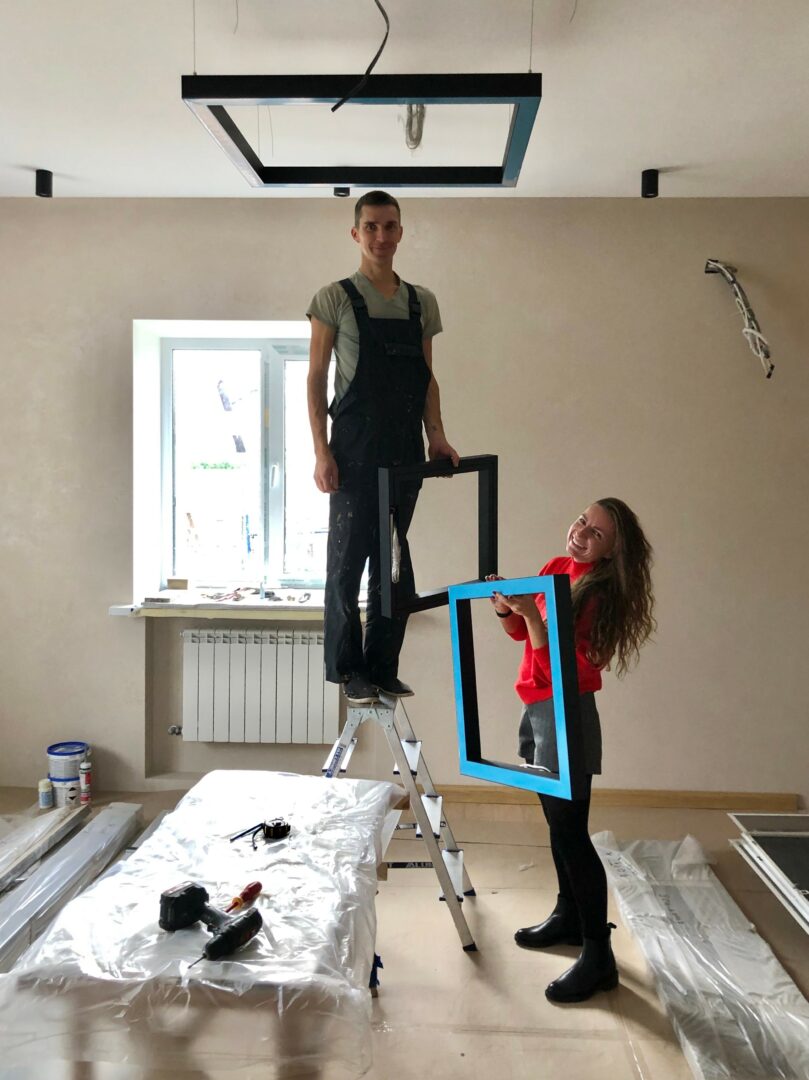
There is so much advice out there about all the different skills and qualities folks need to develop in order to succeed in today’s highly competitive environment and often it can feel overwhelming. So, if we had to break it down to just the three that matter most, which three skills or qualities would you focus on?
I believe that one of the most important qualities is the constant pursuit of learning and acquiring new knowledge. As for me, I don’t just love learning—I understand that it is vital for me as a professional. It’s not the knowledge itself that matters, but how it helps people.
I read several types of books at the same time. Naturally, there are books related to my profession, but also books on self-development, human psychology, and the laws of nature. I constantly take training courses and, whenever possible, revisit the ones I’ve already completed. The topics can vary greatly—when working with people, you need to be well-rounded.
It’s not enough to understand just color theory, furniture, materials, lighting, layout, and ergonomics—you also need to understand human psychology. A designer must understand the human body, be aware of biorhythms, and grasp how the world is structured. After all, people are a part of this world, and they should exist in harmony with it rather than feel disconnected from it. The same applies to the spaces I create—they must be organic, both for the world and for the people living in them.
The second key quality is Discipline.
Discipline is the strongest form of self-love; it is the ability to ignore instant gratification in favor of a greater reward in the future. It’s that annoying word from childhood that we so often heard from parents and teachers, the very thing we rebelled against—only to later realize that nothing can be built without it.
Being disciplined when someone is demanding it from you is much easier than practicing self-discipline every day. Setting tasks, completing them, knowing that no one will punish you but also that no one will praise you either. It’s just you. And your growth depends entirely on you.
I plan every week. I used to schedule every day in detail, but now I focus on five key tasks daily (exercise is always number one), and the rest are left to my consciousness—to decide which day to tackle them, as long as everything is completed by the end of the week.
I don’t have the concept of “I don’t feel like it.” Instead, it’s “Today, I’ll focus on this.”
The third key quality is doing your job well—valuing yourself and your work.
I never take on something I don’t understand. I either bring in specialists or decline the project. I can’t comprehend how some people offer services in fields they don’t truly understand. It’s one thing to write “Italy” on a box of Chinese tights (don’t do that), but it’s another to design a living space for people that could genuinely harm their well-being.
Many times, I have been asked to take on not only interior design but also facade and landscape design. I don’t take on what I’m not skilled in, and no extra income will convince me otherwise.
Be a good specialist—do your job honestly and properly. If you can’t handle something, bring in those who know exactly how it should be done. Yes, you’ll have to share a portion of your earnings, but you’ll be sure that you’re delivering a high-quality product to people.
Don’t be shy about asking for fair compensation for quality work. For many people, value is determined by how much they pay. A client who pays a significant amount understands its worth and also knows exactly what they expect in return. Such a client won’t interfere in areas they don’t understand. Any interference on their part would only harm the outcome (I’m referring to true professionals being paid for quality services, not cases of fraud or intentionally poor work).
Now, let’s consider another case: a client doesn’t want to pay the quoted price, bargains, and tries in every possible way to lower the cost. They devalue the professional and their work. And the professional gives in, not realizing what they are agreeing to. Now, everything will be done as the client dictates—absolutely everything. Endless revisions, late-night and weekend calls, redoing already approved work, and so on. Do you know how such a client sees the professional? “No backbone, no confidence in their skills, no courage to stand their ground—must not be that great of a specialist.”
Don’t agree to such conditions. If a client wants to pay less than the quoted amount, offer to remove something from the project—that’s the only way the price can be lowered. I always explain to clients what they will lose if certain parts of the project are cut; I walk them through what it would mean to visit stores themselves, choose materials, bring them to the site, compare them; I honestly tell them how much time this will take. Then, I ask them to estimate the time they would spend and compare it to the costs.
We very rarely remove anything from a project, and if we do, we often end up adding it back later through an additional agreement.
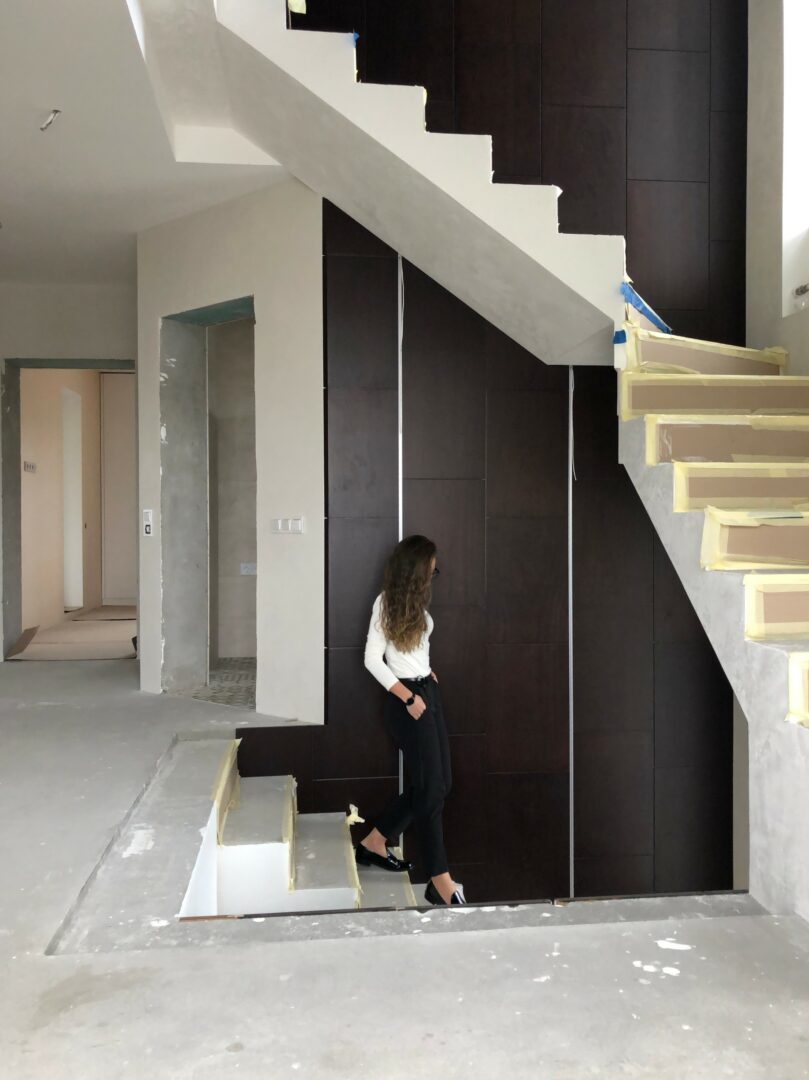
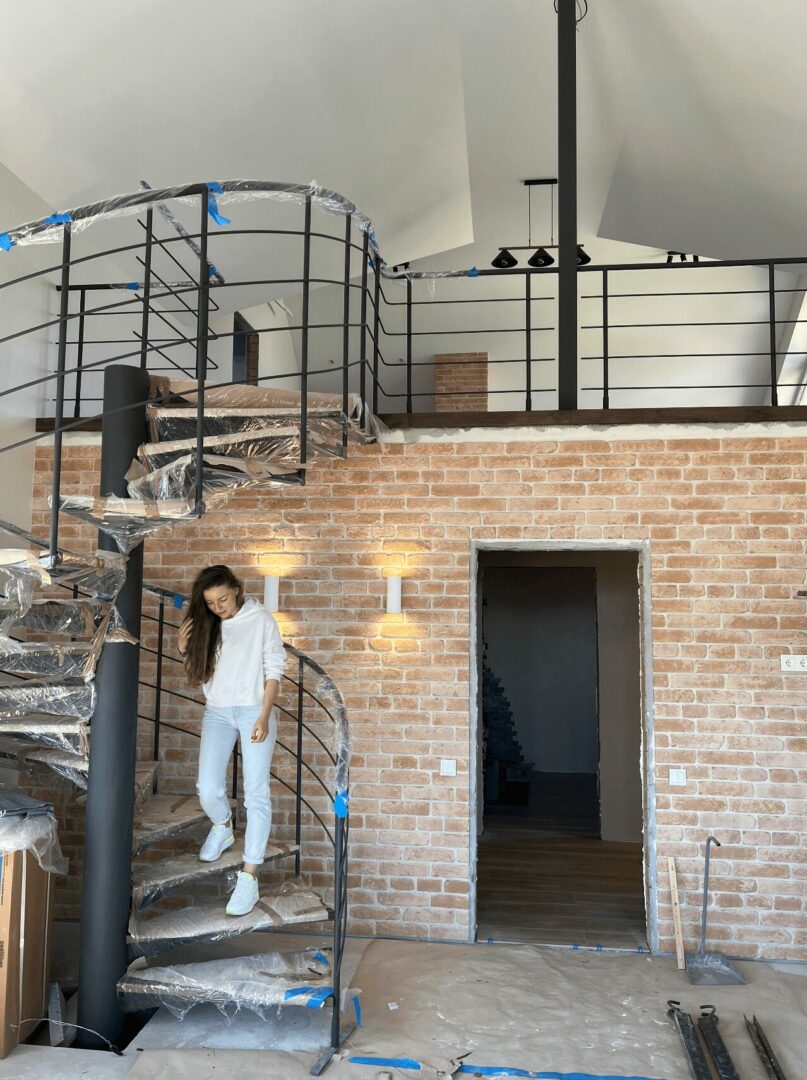
Tell us what your ideal client would be like?
A designer, like any specialist, must respect and value themselves and their work. Only through mutual respect can something truly great be created, and I’m not just talking about the final result—the process itself is just as important.
In more than ten years of working in this field, I have had cases where I had to end collaborations with clients. This didn’t happen because I couldn’t defend my ideas or prove the validity of my proposed solutions, but because the client themselves didn’t know what they wanted. And when a person doesn’t know what they want—that’s the most difficult type of client.
If a client thinks first and foremost about themselves, their feelings, and their needs, everything will go smoothly—their true self never makes mistakes. But if a client is building their home to impress others, to create a “wow effect,” then their true self is absent from the process. The desires of such people will constantly shift depending on outside opinions and trends.
My ideal client is someone who creates a home for themselves, not for others.
The second reason collaboration might end is when a client does not value you as a professional or respect your expertise. If someone with no connection to your profession starts dictating how you should work, it’s best to walk away immediately. A lack of respect is always a bad situation.
It’s interesting how no one goes to a doctor and thinks about telling them what to do or which medications to prescribe. Yet in design, for some reason, any housewife who has watched a couple of shows suddenly considers themselves an expert. I always base my work on the laws and principles that govern space. My opinions are always well-reasoned—nothing is created out of thin air.
My ideal client is someone who respects me, my experience, and my work.
For me, creating and executing a project is about beauty, joy, and pleasure. It’s about love.
Every action should, in some way, bring satisfaction and positive emotions. People who see the process as “suffering” will inevitably bring that energy into it, making it anxious and destructive. After all, if someone expects something bad to happen, it will—how could it not? They’re waiting for it.
You give yourself fully to the process, bring joy into it, believing it’s your responsibility to help, to save the client and their home.
But these stories usually don’t end well. Such people fail to see your work, your involvement—their chaotic thoughts only cloud the picture.
Trust, ease, gratitude, and joy—this is the only way.
I don’t believe that every challenge makes us stronger. Sometimes, true strength lies in recognizing the challenge and walking around it, because the lesson has already been learned, the conclusions already drawn. And that, too, is about love—love for yourself.
My ideal client is someone who approaches the process with joyful enthusiasm and unwavering confidence that everything will turn out beautifully.
Contact Info:
- Website: http://www.geniegerman.com
- Instagram: @genie.german
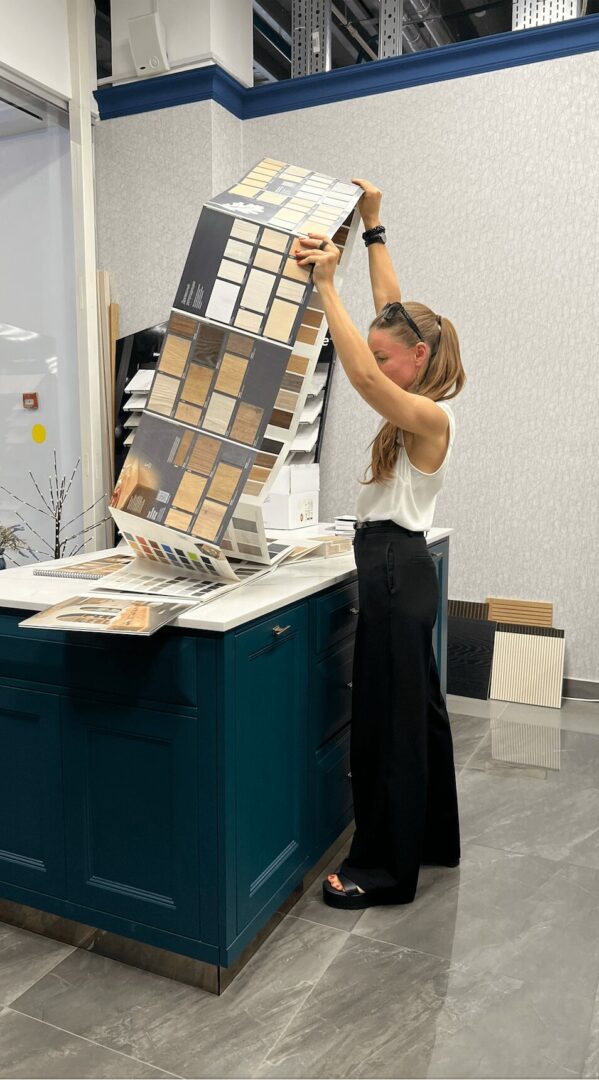
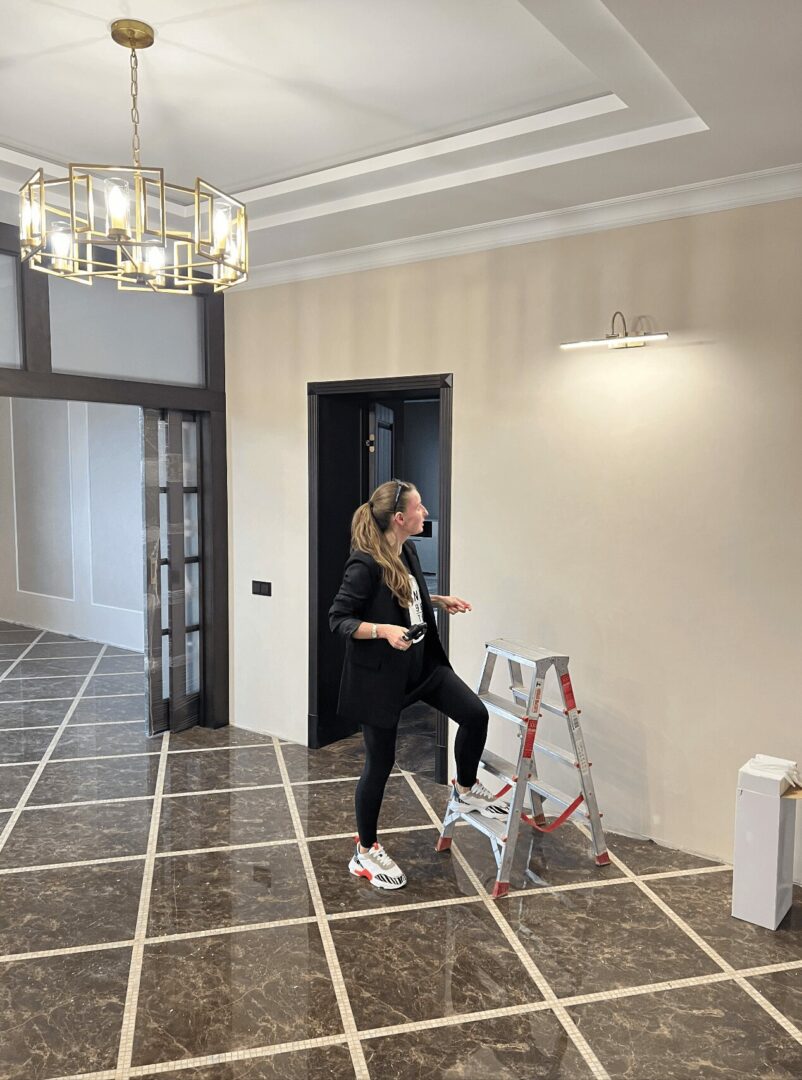
Image Credits
Genie German
so if you or someone you know deserves recognition please let us know here.

